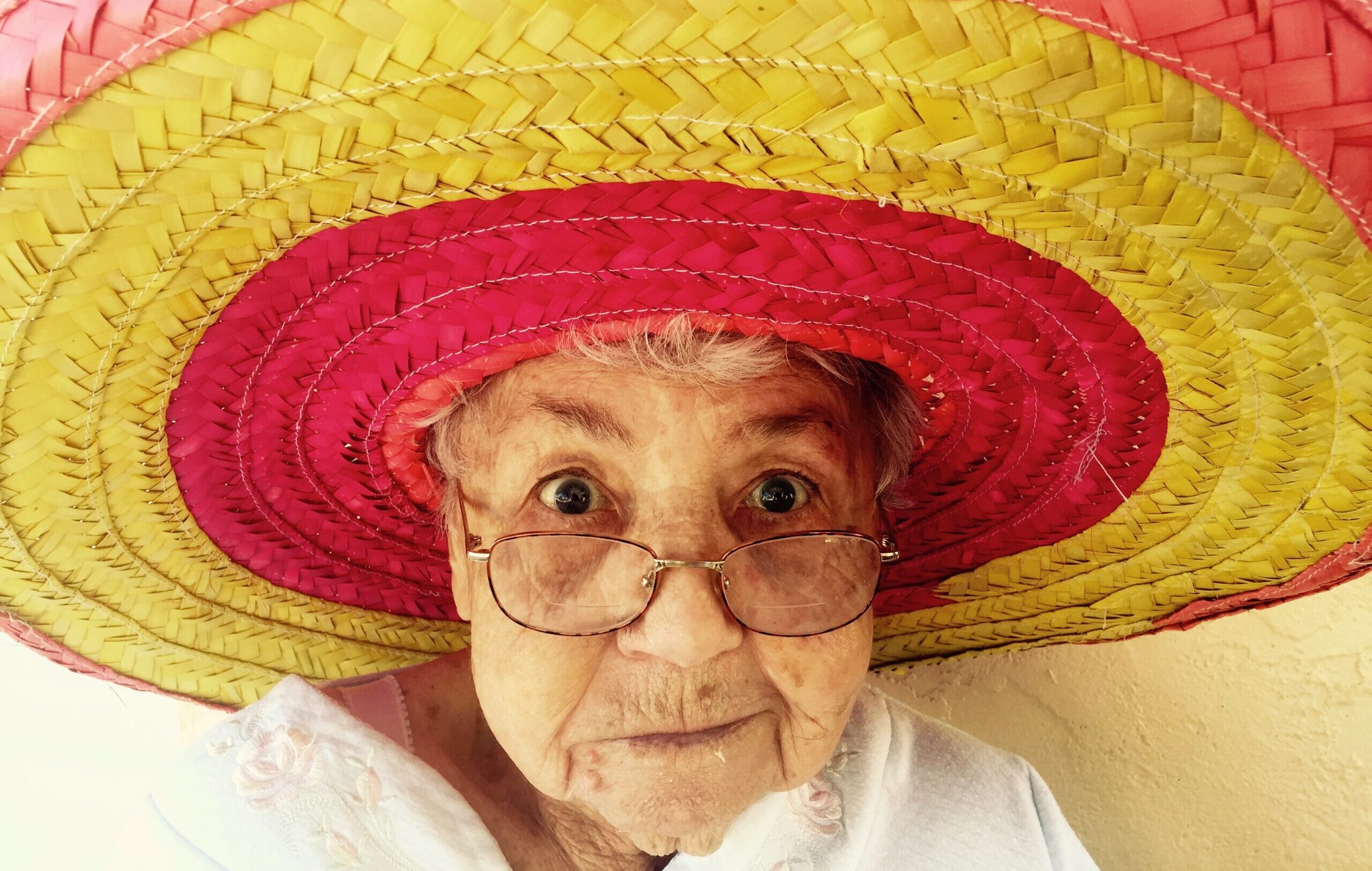Back in my 50’s, oh so long ago, yet seems like yesterday, I was teaching a workshop on graceful aging. I felt eminently qualified -, after all, I now had my AARP membership. The class that day was about resilience and I was demonstrating spiraling down to the floor and coming up again, talking about how we use gravity as our friend, recover easily, etc. etc. An elegant and delicate woman of indeterminate age raised her hand. “How old are you, dearie?” she asked in a tiny voice. “I’m 55!” I said proudly, as if this was actually something to be proud of.
She nodded, paused, and said, “Just wait till you’re 85.” She didn’t say, “Let’s see how you get down to the floor then,” or “Let’s see how resilient you are then.” She just left it hanging. The audience, comprised of people from 50-90 laughed.
It was a profound moment of learning. I had never considered being 85. Heck, I’d never even considered being over 60. Since then, as I’ve aged along with millions of other boomers, I’ve worked with hundreds of people between the ages of 55 and 95 and I’ve learned that you can’t always plan to “age gracefully,” and that it’s almost impossible for a young person to understand what is really taking place in an older person’s nervous system.
People would come to see me after knee or hip replacements, feeling like failures, or worse, in constant pain because their 25 year- old physical therapist had given them impossible exercises, without understanding the challenges of an older nervous system. Or they had been told, “That’s as good as it gets, so suck it up.” They come to Feldenkrais lessons as a last resort: it’s rarely covered by insurance, it seems hard to explain and darn it, how do you pronounce it again?
That’s when they discover that it’s not about doing painful exercises, or trying to turn back the clock with fitness challenges designed for 35 year olds. They learn to move smarter, more efficiently, using intelligence and attention to improve their quality of life. More than once, someone has come into class with a broad smile and said, “Guess what, Lavinia! I fell the other day. I laid there for a moment and realized, ‘I’m OK!’, got up and walked back into the house. And today I feel just fine! I can only assume that I didn’t hurt myself because of those Feldenkrais classes!”
Moshe Feldenkrais defined health as “the ability of the nervous system to recover from shock.” Children fall and get up effortlessly. When I was a young performer I thought nothing of dive rolling across the stage. But hormonal changes, old injuries (what was I thinking when I leapt off the stage and smashed into that radiator?), and other insults to our nervous system begin to challenge our idea of “grace.”
I hear so many older people say, “I know that movement is important, but everything hurts,” or “After my knee replacement or heart attack or broken pelvis, etc., I can’t walk well anymore.” It’s no fun to move when you are in pain. Most of us developed our repertoire of movement habits before adulthood. However, older bodies don’t have the same muscle mass, so even simple things like opening a jar become challenging. Reaching for that top shelf on the step ladder is a disaster waiting to happen if you can’t trust that trick knee. I was recently with a younger friend (she’s only 64!) who froze in terror on a hike because she was afraid to try to cross a small stream, petrified of falling. We instinctively know we haven’t got the same power, resilience and maneuverability we had at 30.
Feldenkrais often spoke of “dynamic stability,” the ability to maintain equilibrium between movement and stability. Because many Feldenkrais lessons explore dynamic movement without the risk of falling, students maintain flexibility, improve balance and develop more functional habits. In other words, instead of pushing and forcing to maintain strength or suppleness, Feldenkrais lessons teach intelligent, functional movement.
Through pleasurable, safe movement sequences, you learn how to use leverage, cultivate logical distribution of effort, reduce unnecessary tension, and master strategies for maintaining your quality of life, all without straining. In fact, over exertion is discouraged – the Feldenkrais motto is “less pain, more gain.”
There are now hundreds of studies about the importance of mobility not just for physical health, but for maintaining brain health. Research has shown that practicing brain games like Lumosity make you better at ….Lumosity. They don’t really improve cognitive ability. Feldenkrais suggested that the body and mind are one whole: “Aa brain without a body cannot think.” As you improve the way you move, you will improve the way you think. Nimbleness is a whole being experience.
Whether it’s maintaining the ability to climb stairs, play pickleball, lift your grandchild or keep hiking, enjoying a movement practice that includes Feldenkrais lessons offers a delightful path to graceful aging. Or as one of my 85 year old students said after rolling on the floor and coming up to standing said recently, “Wait till I show those guys at the gym what I just learned!”
Want to get started? Here’s a lesson you can do lying on the floor, or even in your bed. It’s designed to improve your mobility, flexibility, eyesight and even your mind!
 About Lavinia
About Lavinia
Lavinia Plonka has been teaching the Feldenkrais Method internationally for over 30 years. Based in Asheville, NC, Lavinia offers ongoing classes and private sessions in person and online. Her popular online courses for The Shift Network have brought a whole new audience to somatic education. She is an assistant trainer and the author of several books that explore applications of the Feldenkrais Method. Lavinia provides an extensive catalog of extremely affordable lessons and workshops for download at www.laviniaplonka.com

